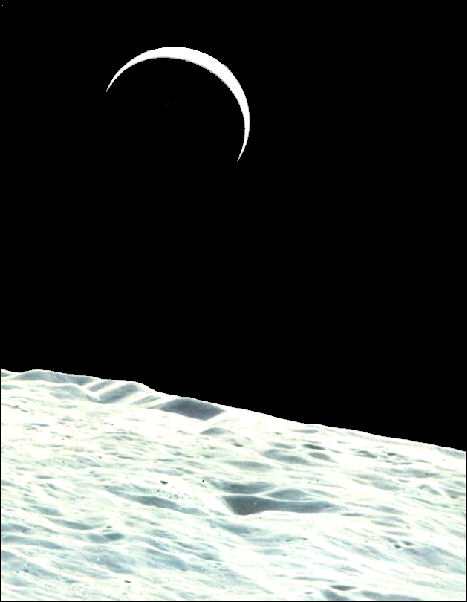
|
| Our conceptions are altered when the point of view is shifted. When the Apollo 15 astronauts took this picture from lunar orbit, they saw the Earth as a thin crescent. At the same time, we on Earth were seeing a nearly full Moon. |

|
| Our conceptions are altered when the point of view is shifted. When the Apollo 15 astronauts took this picture from lunar orbit, they saw the Earth as a thin crescent. At the same time, we on Earth were seeing a nearly full Moon. |


